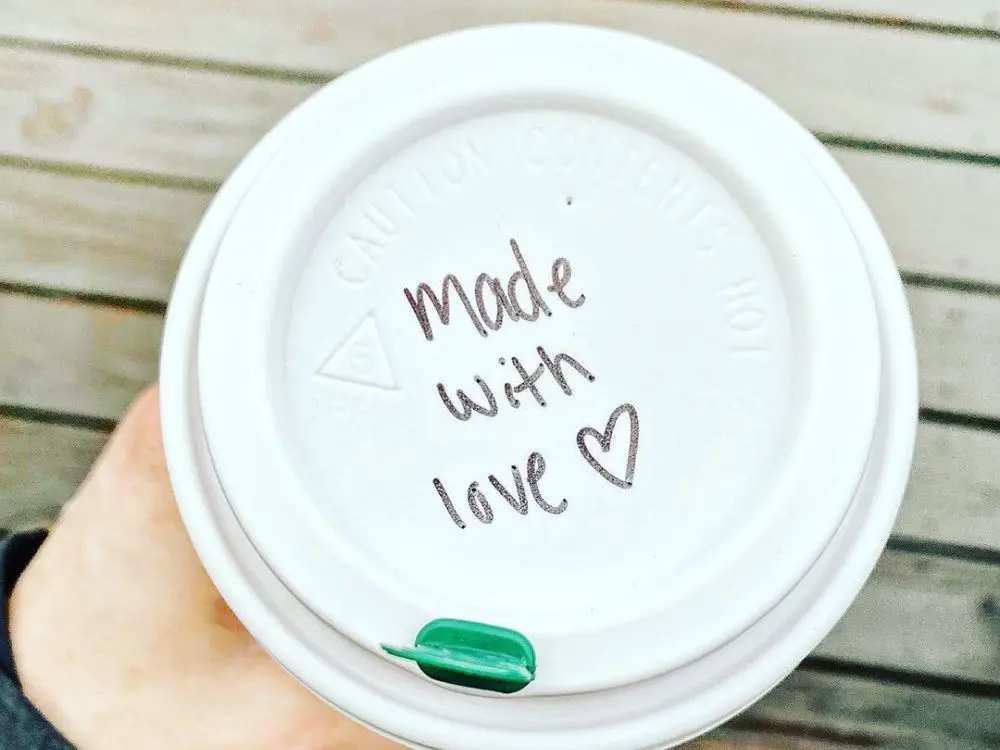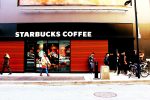“What’s your Starbucks order?” It’s a common phrase that ignites excitement in some and prompts eye rolls in others. From cold and sweet favorites to frothy and steaming mugs, the drink chain captures customers with their fun spin on refreshments. But the coffee company serves more than just your average cup of joe; its image has grown into a cultural touchpoint: “Going to Starbucks” has transformed from a passive caffeine craving into a full-on occasion. To plan one’s day around Starbucks is one thing, but constant allegiance to a beverage brand speaks to the way companies hold power over their customers’ lives. On the flip side, what do companies like Starbucks think of their loyal patrons?
The recent success of a YouTube video, “How Starbucks Operates Like a Bank While Serving Coffee,” has put a new spin on how to look at the fan-favorite shop. Reaching about 900,000 views over the span of four weeks, the Wall Street Journal dove into what makes Starbucks a thriving business beyond their toothsome treats. By turning toward the financial success that comes from their products, the WSJ concluded that the coffee chain operates its business similarly to a bank.
But how does that work out? Throughout the seven-minute crash course on Starbucks’ economic prosperity, the viewer learns that cash flows back to the giant corporation through gift cards and mobile ordering. Before a drink or a snack gets in the hands of their customers, there’s value within the gift cards and the process of uploading money into the Starbucks app.
Such success does not go unnoticed: As the video remarked, “If Starbucks was a bank, it would rank as the 385th biggest in the country.” While the clip scratched the surface of Starbucks as a business giant, the WSJ brought forth an intriguing question for the average coffee fanatic: Is business more important than customer satisfaction? Even if there are obvious answers to this question, the conversation brews uncertainty when dealing with customers loyal to the brands they identify with.
Since its inception in 1971, the Starbucks name and recognizable mermaid logo have attracted caffeine fiends all around the world. Coming a long way from humble Seattle beginnings, the various iterations of Starbucks worldwide has reinvented what it means to grab a drink today. Their signature “coffee house culture” transformed the public reception to casual drinks with over 33,000 stores and counting globally. In addition to all this success, what’s embedded in the Starbucks formula that allows them to channel “coffee as something to share with friends and family?”
For one, Starbucks as a cultural icon has drastically changed what is considered a “pastime” activity. Who could have guessed that the act of “going out” for a single-serving beverage could turn into a full event? Everyone seems to have ”their” own special Starbucks order or else is quick to be excluded from the outing. The anticipation of ordering a beverage, complete with “your” customizations, makes the entire process even more individualized and personal. Don’t know what to order? Lists are curated each year to elaborate on the right drinks for every taste. From an extensive ranking of every drink on the menu to more seasonal suggestions, Starbucks became synonymous with fun refreshments throughout the year. The creation of “a third place between home and work where people can relax, enjoy a cup of coffee and experience the inviting ambiance” allowed Starbucks to thrive as the go-to spot for every kind of hangout.
The coffee chain stays relevant even when customers are not directly ordering drinks. Their constant presence on social media shares the joys of “going to Starbucks” through a screen, which touches social life beyond their cafe walls. To date, the Starbucks hashtag on Instagram has collected over 38 million posts, from aesthetic drink photos to secret recipes. If that jaw-dropping number wasn’t monumental enough, the Starbucks TikTok hashtag also surpassed 21 billion views. Snippets of people ordering their drinks or crafting crazy concoctions exemplify how everyone can make Starbucks “their own,” despite the chain interacting with millions of people worldwide. According to the WSJ video, the company can make “170,000 different varieties of drinks,” putting pressure on the barista for the customer’s pleasure. Their worldwide recognition is confirmed through “the staggering number of options” that the company offers, making it harder for competitors to keep up. If customer satisfaction is at the heart of their service, how does this relationship help fuel the Starbucks craze?
From a business perspective, the physical transaction of purchasing a Starbucks beverage creates a guise that allows businesses to thrive. Through gift cards, a mobile app and a rewards system, the company capitalizes on its intimate relationship with customers. To reference the WSJ report, “Starbucks says it holds about $2.4 billion dollars in cash that was uploaded by customers to be used later. That number exceeds the deposits at many American banks.” Since Starbucks allows their customers to buy gift cards that have no expiration date as well as upload money into their app, the company essentially “stores money” for them like a bank. When transactions do occur, customers are contributing to the “bank of Starbucks” by using their services to buy more Starbucks-related merchandise.
At the core of the argument, gift cards are not the enemy. Even Mashed mentioned the fun of getting a gift card, recalling, “There’s something so satisfying about stopping by a favorite restaurant or coffee shop for a midday treat while having the cost already covered.” Despite all the gifts that come from the little piece of plastic, the money-holding card is evidently a money-maker for the Starbucks company. If the eye-catching cards didn’t already grab one’s attention, the ability to pre-load cash into their app makes it almost too easy to grab a drink whenever cravings strike. To reframe Starbucks as this pseudo-bank giant is a distinct reminder that their business strategy is established first, and the customers will follow. The added boost of striking up a loyal fanbase is the key factor needed to keep them running strong through over 50 years of pouring drinks.
As Fried Coffee put it, “With its Italianized beverage names, its inviting decor, and even some of its unreasonably high prices, Starbucks feels like an indulgence or a reward.” The situating of the customer in a fleeting, choose-your-own-adventure drink story grants an emotional response that keeps people coming back. However, the allure of Starbucks and their socialized sipping has completely distracted the public from how they turn cups into cash. The cultural touchpoints associated with a relaxing Starbucks drink end up bending out of the fan’s favor and falling into the wallets of the Starbucks corporation. In short, it’s important to recall that despite one’s personal identification with a brand, companies will forever plan tactics that go beyond making your Frappuccino order correctly.
The WSJ report highlighted Starbucks’ hold over their faithful customers while using their “love” to the company’s advantage. No longer are customers simply coffee shop patrons, but they are players in a transaction churning out cash for those in power. Hiding those moves under the radar just proves the subtle and sneaky lengths companies will go to keep the money game in their favor. Since Starbucks is just one of many chains to achieve skyrocketing success, it does spark questions as to which other daily pleasures might be strategically manufactured. Nevertheless, the realization of strategy should not erase how nice it is to savor an indulgent sip. Whether you have a caffeine obsession or cravings for a sweet treat, it’s clear that Starbucks never stops delivering delightful drinks that benefit in more ways than one.

















